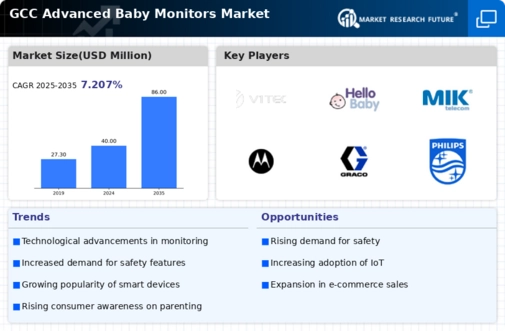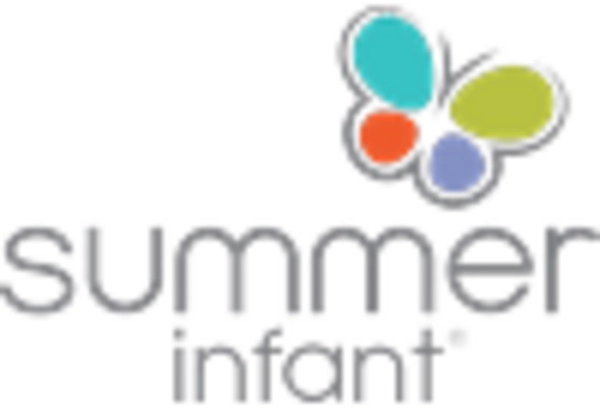The advanced baby-monitors market is currently characterized by a dynamic competitive landscape, driven by technological advancements and evolving consumer preferences. Key players such as Nanit (US), Owlet (US), and Motorola (US) are at the forefront, each adopting distinct strategies to enhance their market positioning. For instance, Nanit (US) focuses on innovation through its smart monitoring solutions that integrate AI and machine learning, while Owlet (US) emphasizes health monitoring features that appeal to health-conscious parents. Motorola (US), on the other hand, leverages its established brand reputation to expand its product offerings, thereby enhancing its competitive edge. Collectively, these strategies contribute to a robust competitive environment, where innovation and consumer-centric approaches are paramount.
In terms of business tactics, companies are increasingly localizing manufacturing and optimizing supply chains to enhance efficiency and reduce costs. The market structure appears moderately fragmented, with several players vying for market share. This fragmentation allows for diverse offerings, yet the influence of key players remains significant, as they set trends and standards that smaller companies often follow. The collective actions of these major companies shape the market dynamics, fostering an environment where innovation is crucial for survival.
In October 2025, Owlet (US) announced a partnership with a leading pediatric health organization to enhance its product's health monitoring capabilities. This strategic move is likely to bolster Owlet's credibility in the market, as it aligns the brand with trusted health professionals, potentially increasing consumer trust and expanding its customer base. Such partnerships may also pave the way for future innovations in health monitoring technology, positioning Owlet as a leader in this niche.
In September 2025, Nanit (US) launched a new feature that allows parents to receive real-time sleep insights through its app, utilizing advanced AI algorithms. This development not only enhances user experience but also reinforces Nanit's commitment to leveraging technology for better parenting solutions. By focusing on sleep analytics, Nanit differentiates itself in a crowded market, appealing to parents seeking comprehensive monitoring solutions.
In August 2025, Motorola (US) expanded its product line to include eco-friendly baby monitors, responding to the growing consumer demand for sustainable products. This strategic pivot not only addresses environmental concerns but also positions Motorola as a forward-thinking brand in the advanced baby-monitors market. By integrating sustainability into its product development, Motorola may attract a new segment of environmentally conscious consumers, thereby enhancing its market presence.
As of November 2025, the competitive trends in the advanced baby-monitors market are increasingly defined by digitalization, sustainability, and AI integration. Strategic alliances are becoming more prevalent, as companies recognize the value of collaboration in driving innovation and enhancing product offerings. Looking ahead, competitive differentiation is likely to evolve, shifting from price-based competition to a focus on technological innovation, reliability in supply chains, and sustainable practices. This transition suggests that companies that prioritize these aspects will be better positioned to thrive in an increasingly competitive landscape.

















Leave a Comment